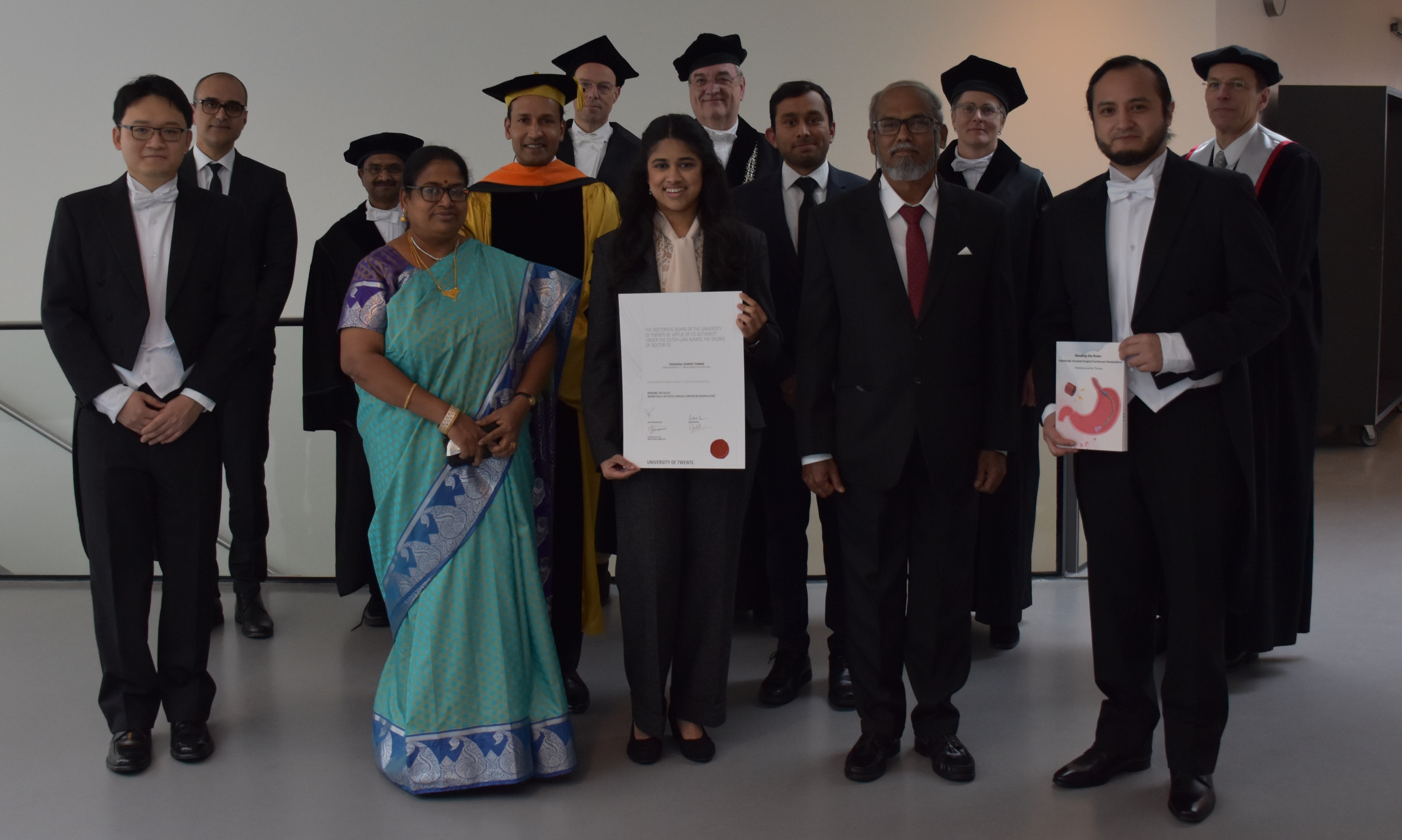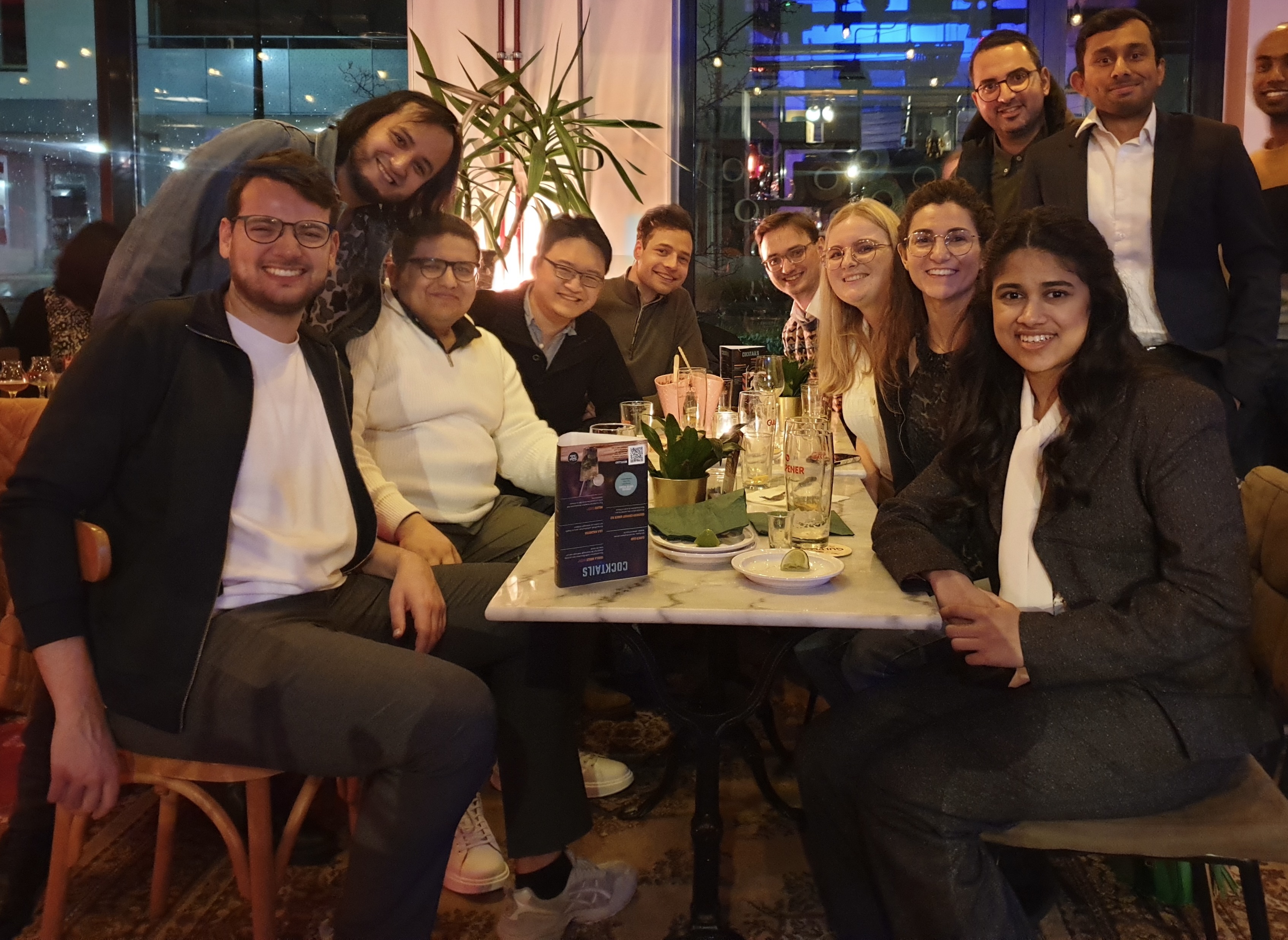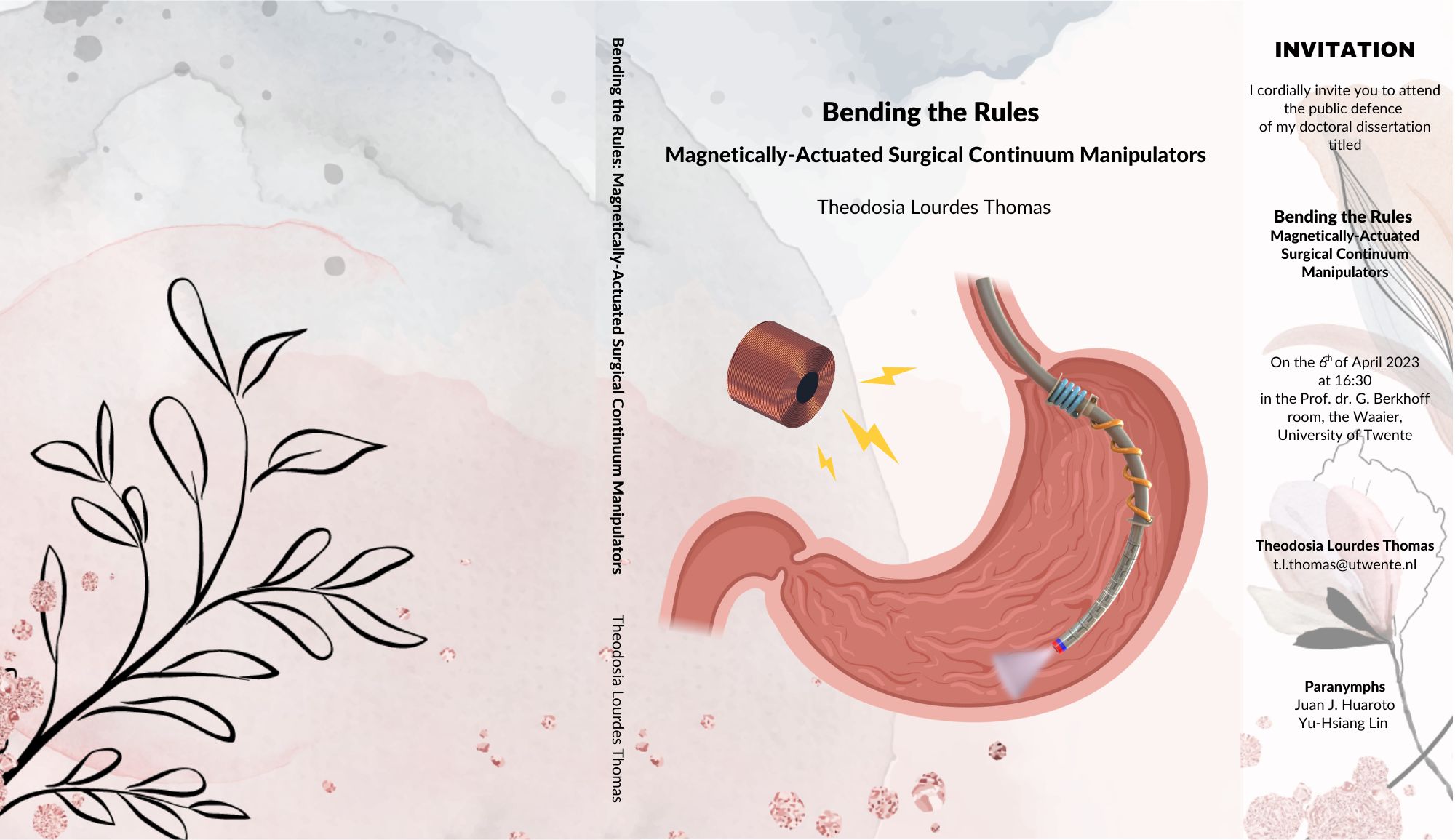
Doctoral defense – Theodosia Lourdes Thomas
SRL doctoral candidate defends thesis.
The defense of the doctoral thesis titled “Bending the Rules: Magnetically-Actuated Surgical Continuum Manipulators” by Theodosia Lourdes Thomas was held on Thursday, 6th of April 2023 at 4:30 pm in the Waaier 4 at the University of Twente. The doctoral thesis is available here. The recording of the defense is available here.
Thesis summary:
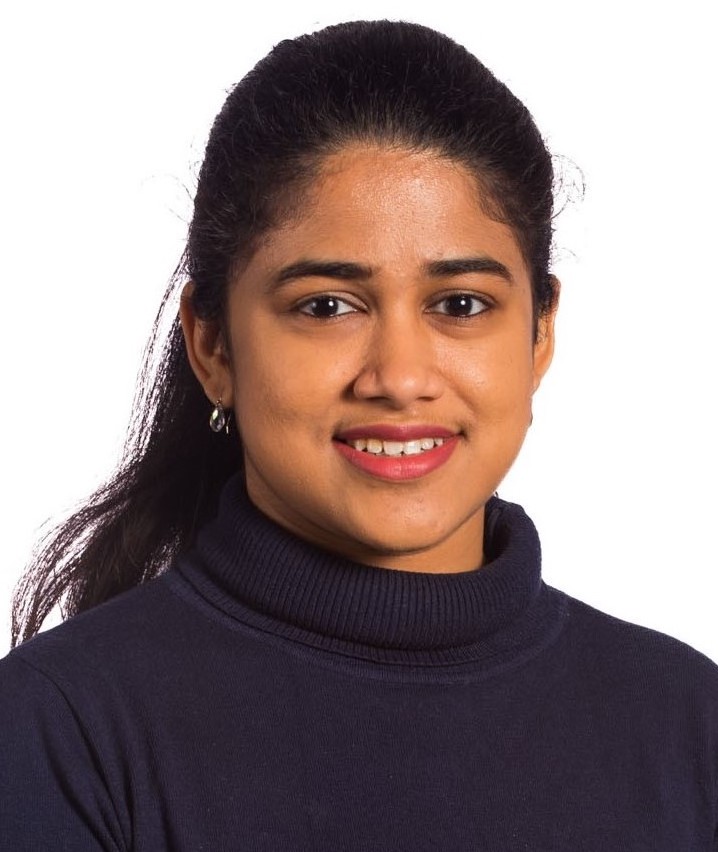 Continuum manipulators have revolutionized the field of minimally invasive surgery (MIS) in the past few decades. Major advances in fiber optics, imaging technologies, teleoperation, and haptics have accelerated the development of robot-assisted surgeries. The continuum manipulators used in robot-assisted surgery are equipped with laparoscopic tools as end effectors to augment the hand movements of the surgeon with precision. With robot assistance, surgeons can perform complex procedures inside the human body with high dexterity. However, the continuum robotics research community has challenged the lack of intuitive and effective operation of the surgical tools. Much uncertainty still exists about the tool-tissue interactions which have associated risks of tissue damage caused by unreliable control and articulation of the tool. This problem is further exacerbated by the limited visualization resolution of internal organs of the human body for safe operation. There is a pressing need to develop continuum manipulators with improved maneuverability and control to reach difficult-to-access surgical sites accurately.
Continuum manipulators have revolutionized the field of minimally invasive surgery (MIS) in the past few decades. Major advances in fiber optics, imaging technologies, teleoperation, and haptics have accelerated the development of robot-assisted surgeries. The continuum manipulators used in robot-assisted surgery are equipped with laparoscopic tools as end effectors to augment the hand movements of the surgeon with precision. With robot assistance, surgeons can perform complex procedures inside the human body with high dexterity. However, the continuum robotics research community has challenged the lack of intuitive and effective operation of the surgical tools. Much uncertainty still exists about the tool-tissue interactions which have associated risks of tissue damage caused by unreliable control and articulation of the tool. This problem is further exacerbated by the limited visualization resolution of internal organs of the human body for safe operation. There is a pressing need to develop continuum manipulators with improved maneuverability and control to reach difficult-to-access surgical sites accurately.
 The aforementioned challenges of MIS play a critical role in the design and development of surgical continuum manipulators. The concept of compliant mechanisms (CMs) has been central to the design of various surgical devices. CMs are flexible mechanisms that use elastic deformation to transfer or transform force, motion, or energy. Devices made of CMs are generally monolithic in nature which leads to simplified fabrication, no wear, no friction, therefore, beneficial in high precision applications. CMs and their sub-components are increasingly used to enhance the range of motion and articulation of surgical continuum manipulators. Recently, magnetic actuation has emerged as a powerful means to execute several surgical functions such as instrument positioning, navigation, grasping, resection, and retraction. Magnetic actuation coupled with CMs has considerable impact in the design of miniaturized manipulators that eliminates the need for any cables tethered for control. Furthermore, accurate modeling of the continuum manipulators and integration of embedded sensing have been effective in the localization of manipulators. Real-time three-dimensional (3D) shape sensing of manipulators in tandem with medical imaging modalities aids in the safe control of the manipulators.
The aforementioned challenges of MIS play a critical role in the design and development of surgical continuum manipulators. The concept of compliant mechanisms (CMs) has been central to the design of various surgical devices. CMs are flexible mechanisms that use elastic deformation to transfer or transform force, motion, or energy. Devices made of CMs are generally monolithic in nature which leads to simplified fabrication, no wear, no friction, therefore, beneficial in high precision applications. CMs and their sub-components are increasingly used to enhance the range of motion and articulation of surgical continuum manipulators. Recently, magnetic actuation has emerged as a powerful means to execute several surgical functions such as instrument positioning, navigation, grasping, resection, and retraction. Magnetic actuation coupled with CMs has considerable impact in the design of miniaturized manipulators that eliminates the need for any cables tethered for control. Furthermore, accurate modeling of the continuum manipulators and integration of embedded sensing have been effective in the localization of manipulators. Real-time three-dimensional (3D) shape sensing of manipulators in tandem with medical imaging modalities aids in the safe control of the manipulators.
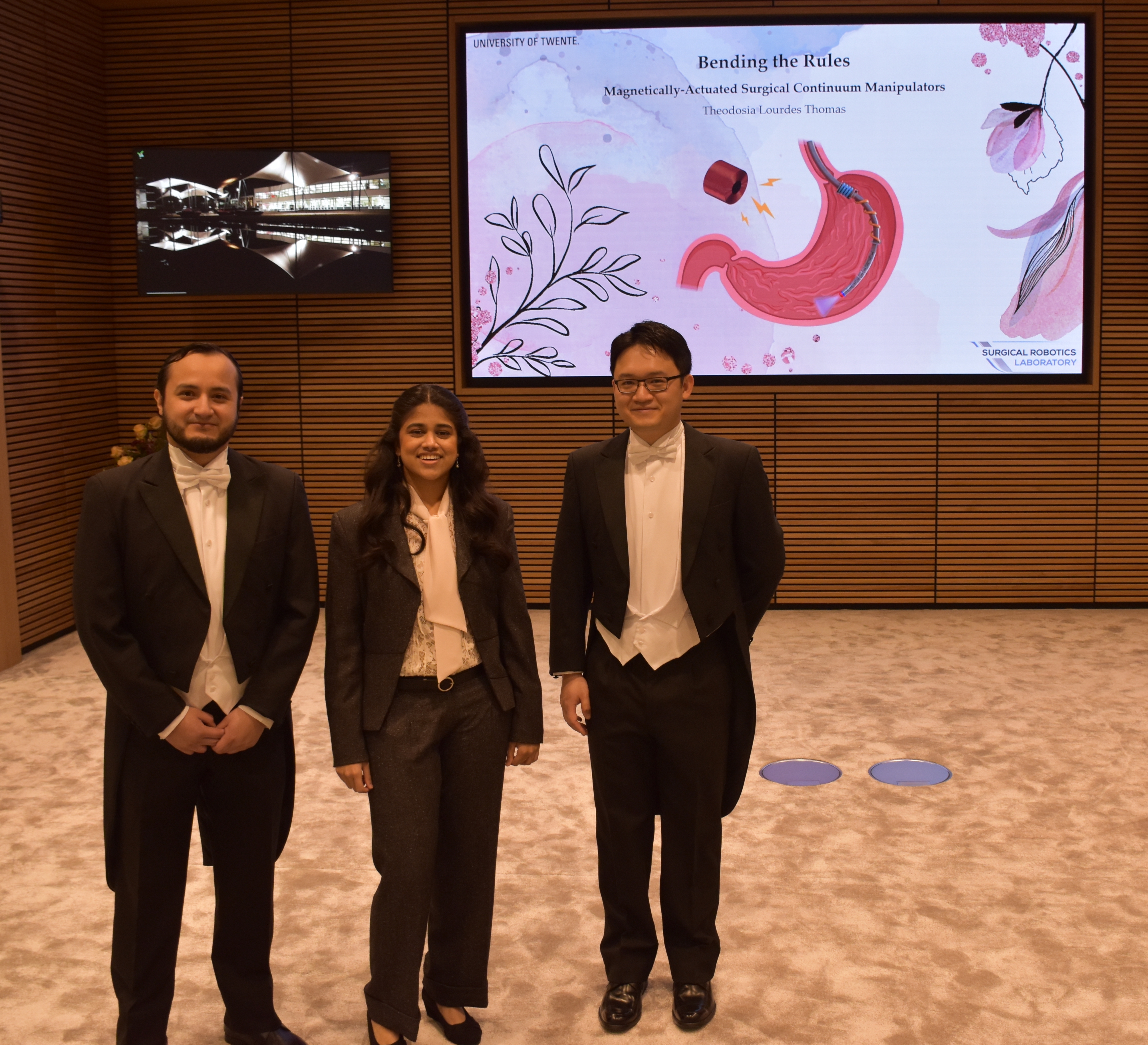 Another significant area of research for surgical continuum manipulators is stiffness controllability. Evidence suggests that variable stiffness mechanisms can be leveraged to achieve specific functions like grasping, exerting forces, and locomotion. Continuum manipulators designed using variable stiffness mechanisms make the best use of flexibility and rigidity when it comes to surgical applications. While softness promotes high flexibility, rigidity is important for precision and load bearing. These attributes promote soft yet stable interactions of the manipulator with the tissue. The main objective of this doctoral research is the development of magnetically-actuated multi-functional surgical continuum manipulators with embedded sensing. The manipulators are designed to address the following key challenges: (1) Design and fabrication of miniaturized flexible manipulators with a working channel, (2) accurate modeling and shape sensing of continuum manipulators, (3) actuation and control strategies to enhance the maneuverability and manipulation capabilities. The overall structure of this dissertation takes the form of three parts and includes seven chapters. Chapter 1 begins by introducing the field of MIS, the use of continuum manipulators for surgical interventions and discusses the challenges in the surgical applications. It then proceeds to describe the research objectives and the list of publications resulting from this research.
Another significant area of research for surgical continuum manipulators is stiffness controllability. Evidence suggests that variable stiffness mechanisms can be leveraged to achieve specific functions like grasping, exerting forces, and locomotion. Continuum manipulators designed using variable stiffness mechanisms make the best use of flexibility and rigidity when it comes to surgical applications. While softness promotes high flexibility, rigidity is important for precision and load bearing. These attributes promote soft yet stable interactions of the manipulator with the tissue. The main objective of this doctoral research is the development of magnetically-actuated multi-functional surgical continuum manipulators with embedded sensing. The manipulators are designed to address the following key challenges: (1) Design and fabrication of miniaturized flexible manipulators with a working channel, (2) accurate modeling and shape sensing of continuum manipulators, (3) actuation and control strategies to enhance the maneuverability and manipulation capabilities. The overall structure of this dissertation takes the form of three parts and includes seven chapters. Chapter 1 begins by introducing the field of MIS, the use of continuum manipulators for surgical interventions and discusses the challenges in the surgical applications. It then proceeds to describe the research objectives and the list of publications resulting from this research.
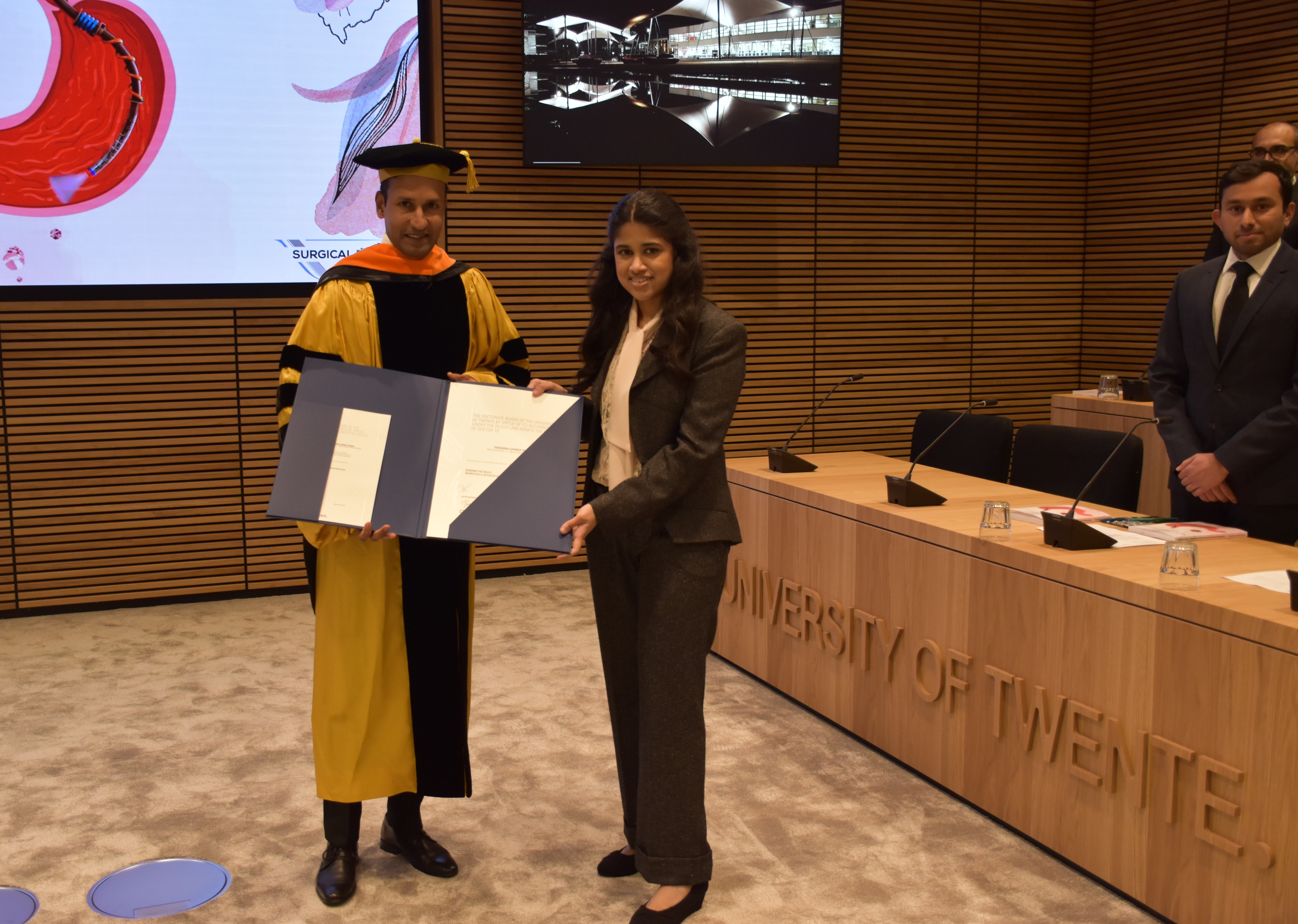 Part I of this dissertation is a rigorous investigation on CMs for surgical applications. Chapter 2 is a survey reviewing the surgical devices that use CMs for broadly five functions: (i) Grasping and cutting, (ii) reachability and steerability, (iii) transmission, (iv) sensing, and (v) implants and deployable devices. The design of CMs are assessed focusing on five key aspects: (i) Conceptual design and synthesis, (ii) analysis, (iii) materials, (iv) manufacturing, and (v) actuation. Chapter 3 presents a new design of a flexure-based compliant continuum manipulator which is magnetically-actuated. The design is based on the idea of mechanical motion constraints to limit the stresses in the flexures. The steerability of the manipulator is demonstrated using a 2D Helmholtz coil magnetic actuation setup in a gelatin phantom under the guidance of ultrasound imaging. Chapter 4 follows on to study the motion characteristics of the spatial bending of the manipulator using a 3D magnetic actuation setup (PaCMag). An intraoperative shape sensing method combining a quasi-static model based on rigid-link modeling and fiber Bragg grating (FBG) sensors is proposed. A closed-loop control strategy to trace different trajectories with the tip of the manipulator is demonstrated. Clinical feasibility of the manipulator as a steerable catheter is shown in phantoms of a bifurcating artery and a heart with the guidance of a miniature camera.
Part I of this dissertation is a rigorous investigation on CMs for surgical applications. Chapter 2 is a survey reviewing the surgical devices that use CMs for broadly five functions: (i) Grasping and cutting, (ii) reachability and steerability, (iii) transmission, (iv) sensing, and (v) implants and deployable devices. The design of CMs are assessed focusing on five key aspects: (i) Conceptual design and synthesis, (ii) analysis, (iii) materials, (iv) manufacturing, and (v) actuation. Chapter 3 presents a new design of a flexure-based compliant continuum manipulator which is magnetically-actuated. The design is based on the idea of mechanical motion constraints to limit the stresses in the flexures. The steerability of the manipulator is demonstrated using a 2D Helmholtz coil magnetic actuation setup in a gelatin phantom under the guidance of ultrasound imaging. Chapter 4 follows on to study the motion characteristics of the spatial bending of the manipulator using a 3D magnetic actuation setup (PaCMag). An intraoperative shape sensing method combining a quasi-static model based on rigid-link modeling and fiber Bragg grating (FBG) sensors is proposed. A closed-loop control strategy to trace different trajectories with the tip of the manipulator is demonstrated. Clinical feasibility of the manipulator as a steerable catheter is shown in phantoms of a bifurcating artery and a heart with the guidance of a miniature camera.
Part II explores the concept of variable stiffness mechanisms for surgical applications focusing on grasping and shape locking. Chapter 5 presents a magnetically-actuated variable stiffness robot (VSR). It is made of a soft magnetic elastomer with a sliding nitinol backbone. The synchronized retraction of the backbone with magnetic actuation leads to high deformation coiling action of the VSR. The grasping of objects of varying diameters in closed-loop using visual feedback is demonstrated. Chapter 6 presents a novel design of a magnetically-actuated variable stiffness manipulator (VSM) based on shape memory polymers (SMPs). The VSM is composed of two nested concentric silicone tubes enclosed within two SMP springs, and a permanent magnet at its tip. The VSM exhibits variable stiffness and variable bending curvatures at variable working lengths. Potential applications of the VSM capable of shape locking are demonstrated in endoscopy, biopsy and laser surgery using robotic magnetic actuation.
Part III concludes the dissertation by discussing the results of the five studies (Chapters 2-6) conducted in this research. Chapter 7 begins by laying out the conclusions focusing on three key themes: 1) Design and fabrication, 2) modeling and sensing, 3) actuation and control. It concludes by providing directions on future research and an outlook. While the scope of this doctoral research was limited to laboratory experiments, it paves the way towards the design of the next generation of surgical continuum manipulators with embedded sensing and stiffening to strengthen the competence of the state of the art surgical interventions.
Promotor
- Prof. Dr. S. Misra (University of Twente/University Medical Center Groningen, The Netherlands)
Thesis Committee
- Prof. Dr. Ir. H. F. J. M. Koopman (University of Twente, The Netherlands) – Chair
- Dr. V. Kalpathy Venkiteswaran (University of Twente, The Netherlands) – Co-supervisor
- Prof. Dr. G. K. Ananthasuresh (Indian Institute of Science, India)
- Prof. Dr. Ir. J. L. Herder (Delft University of Technology, The Netherlands)
- Prof. Dr. P. C. Jutte (University Medical Center Groningen, The Netherlands)
- Prof. Dr. Ir. G. J. M. Tuijthof (University of Twente, The Netherlands)
- Dr. Ir. M. Mehrpouya (University of Twente, The Netherlands)

